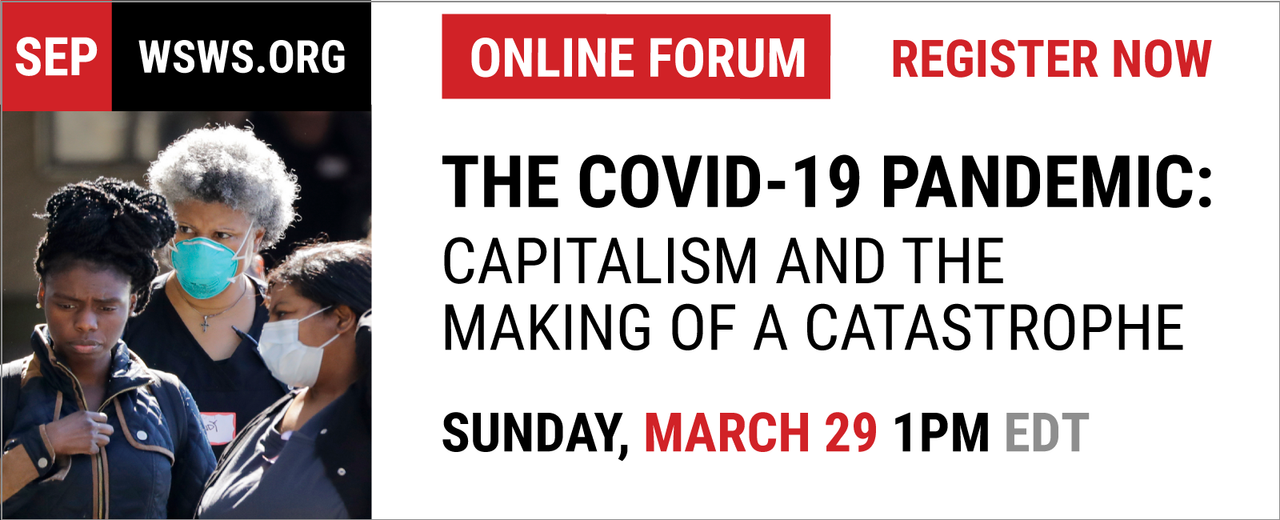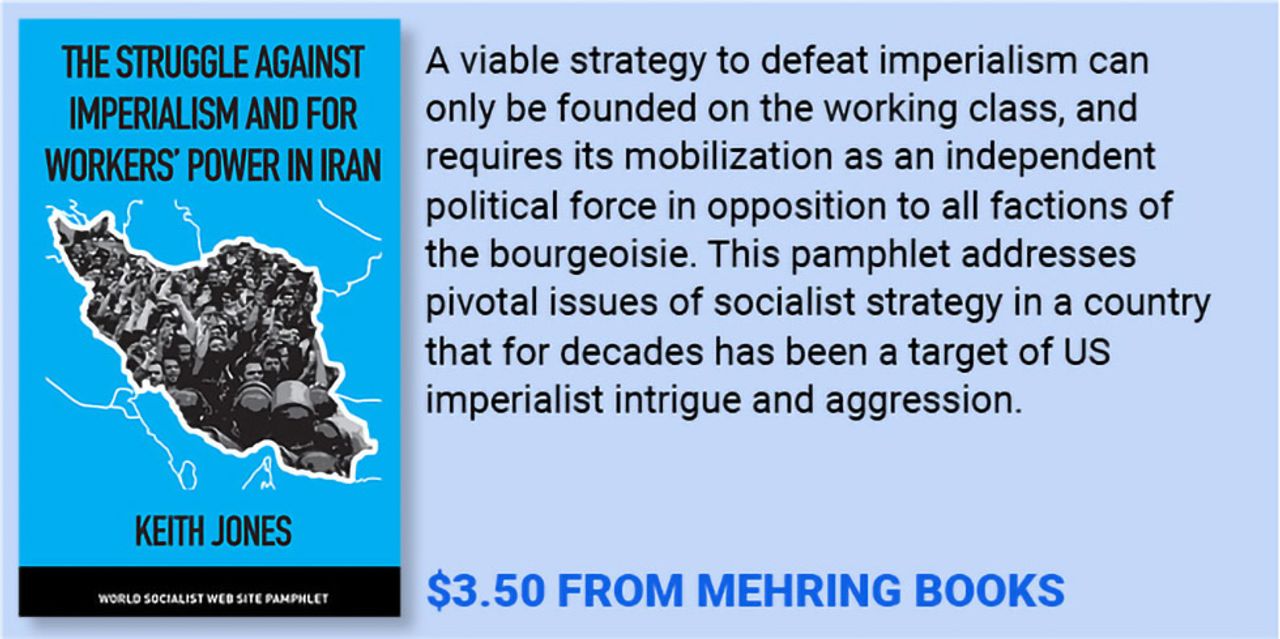Mike Head
A lengthy “national cabinet” meeting of federal, state and territory leaders yesterday took no new steps to address the coronavirus pandemic, except a compulsory quarantine of arriving overseas passengers, to be enforced, in an unprecedented fashion, by the army as well as the police.
The number of officially confirmed COVID-19 cases in Australia now exceeds 3,500, more than trebling in the past week. A total of 14 deaths are so far attributed to the virus.
 People queuing for coronavirus tests at Royal Melbourne Hospital
People queuing for coronavirus tests at Royal Melbourne Hospital
New South Wales remains the worst-hit state, with 1,617 cases as of this morning, an increase of 212 in the previous 24 hours. Victoria has 684 cases, after recording an increase of 111 yesterday. Queensland has reported at least 70 new infections and a total of 625. The official figures elsewhere in the country, as of this afternoon, were South Australia 257, Western Australia 255, Tasmania 58, Australian Capital Territory 62 and the Northern Territory 15.
Prime Minister Scott Morrison nevertheless declared: “We’re getting on top of this and we can keep on top of this and we need to keep doing what we have been doing.”
The prime minister’s claim was reminiscent of US President Donald Trump’s tweet a month ago that the virus was “very much under control.” Now, the US has the greatest number of confirmed cases in the world—more than 100,000—and the deaths are spiralling above 1,500.
Like the Trump administration, Australia’s political leaders are determined to keep as many workers as possible on the job in order to shore up corporate profits. Those most exposed to infection, such as in factories, warehouses, large building sites and mining projects, are being required to work.
No new shutdowns were announced yesterday, and there was no expansion of testing. Restrictions still bar most people from being tested for the virus—even those with flu-like symptoms—making the official count unreliable.
Nor were wage subsidies announced to support the hundreds of thousands of workers who have been laid-off, including more than 40,000 retail workers who lost their livelihoods this week. There were no protections from eviction for tenants who can no longer pay their rents.
Above all, there was no explanation for the refusal of the governments to heed the impassioned calls by thousands of doctors, as well as numerous health experts, for an immediate strict lockdown to halt the disease’s potentially fatal spread.
Morrison emphasised the united opposition of all Liberal-National and Labor government leaders to any suggestion of a “lockdown.” Morrison denounced journalists for even using the word.
Asked why the government was not taking that precaution, Morrison replied: “I would actually caution the media against using the word ‘lockdown,’ because I think it does create unnecessary anxiety.”
Morrison and the federal government’s Chief Medical Officer Brendan Murphy dismissed a question about a study, published in the Medical Journal of Australia on Thursday, which estimated that the hospital system’s intensive care unit (ICU) capacity of 2,200 beds will likely be exceeded by about April 5.
Models vary, but most predict that the number of people in Australia who may become infected could fall between 12 million, with some control of spread, and 16 million if out of control. Even if the fatality rate is relatively low—0.9 percent—roughly 100,000 to 145,000 people will die before the epidemic is over.
There is mounting evidence that the Australian governments are keeping the public in the dark about the true extent of the looming catastrophe.
Under the headline, “Planning for the dark side of the pandemic,” the Australian Financial Review reported yesterday that teams of medical professionals have begun devising a mass palliative care plan, preparing for the horrific conditions of overwhelmed hospitals already seen in Italy, Spain and the US.
“Such a plan would be for people who become seriously ill with COVID-19 and are not able to secure an ICU bed,” health editor Jill Margo reported. “As there is no other treatment, they will need end-of-life care… Under a national plan, they could be taken to town halls, school halls, gymnasiums or other large covered spaces that have been transformed into decent places for people to go for a safe and dignified death.”
At yesterday’s press conference, Morrison and Murphy downplayed such dangers, saying plans were being made to triple the ICU capacity. But this could be insufficient and would also require thousands of additional trained ICU nurses.
Hospital nurses, doctors and other health workers are continuing to report acute shortages of personal protection equipment such as surgical masks and gowns.
A journalist asked Morrison: “Many have suggested that more comprehensive restrictions would result in a shorter disruption and fewer deaths. Now, we know you don’t agree with that, but are you willing to release the modelling that explains what the government thinks would happen under each scenario?”
Morrison provided no answer. Instead, he attacked “critics,” accusing them of being “cavalier” toward job losses. “I sometimes note that those who often are pushing for greater restrictions, they will keep their job,” he insinuated. “I am not going to be so cavalier about it.”
In reality, the workers thrown onto the Great Depression-style dole queues outside welfare offices this week are also victims of the refusal of the authorities to take the measures needed weeks ago to introduce mass testing, tracing and isolating of positive cases, as repeatedly urged by the World Health Organisation.
Anger and concern among teachers, parents and retail workers this week shattered the determined efforts of the national cabinet, backed by the trade unions, to force schools to remain open, and keep shopping malls and retail chains open.
Despite being backed by the unions, such as the Australian Education Union (AEU), all the states and territories have been forced to “transition” schools to mostly online teaching. Retail giants are shutting their doors, joined yesterday by Myer, which laid off 10,000 workers.
There are signs that outrage over unsafe conditions is spreading throughout the working class. About 80 workers at one Coles supermarket warehouse at Laverton, in Melbourne,
walked out on Thursday night because they were being forced to work close together, in violation of 1.5-metre distancing protocols and without personal protection equipment. They returned to work after Coles agreed to their demands.
While refusing to take now urgently-needed restrictive measures, the federal and state governments are imposing unprecedented enforcement measures, such as severe fines and jail terms, and the domestic deployment of the military.
At the request of the state governments, Australian Defence Force troops will be on the front line of policing quarantine and self-isolation orders, including visiting people’s homes and residences.
During his media conference, Morrison again thanked the trade union apparatus, saying: “I thank the unions for their support and the constructive way they are approaching it.”
A report in today’s Australian revealed how far the Australian Council of Trade Unions (ACTU) is going to assist the governments and big business to keep workers on the job, despite unsafe conditions, as well as to slash working conditions, wages and penalty rates.
Morrison personally rang ACTU secretary Sally McManus to express his appreciation and “he especially wanted to thank the education unions.” He had met AEU leaders during the week to strike a deal to attempt to coerce teachers into staying in unsafe classrooms.
For two weeks, McManus and Industrial Relations Minister Christian Porter have spoken daily via video-conference to “communicate frankly and quickly about the fast-moving, multi-pronged crisis.” Porter told the Australian he was now “BFF” [best friend forever] with McManus.
The ACTU has agreed to what the Murdoch media newspaper called “groundbreaking agreements” to cut the conditions of hospitality, clerical and restaurant workers. These deals, quickly rubber-stamped by the federal government’s Fair Work Commission, include sweeping reductions in penalty rates and minimum-hours rules.
While described as temporary, these deals will establish precedents that will be imposed when businesses resume. This dovetails with Morrison and his state and territory counterparts pouring billions of dollars into the coffers of the corporate elite via repeated “rescue” or “hibernation” packages to boost profits.
For the ruling elite, “winning the war” against the pandemic means exploiting the crisis to intensify the exploitation of the working class. Walkouts like those at the Coles warehouse need to be the starting point for workers to break out of the employer-union straitjacket and form their own action committees to develop the fight for the necessary socialist reorganisation of society.





